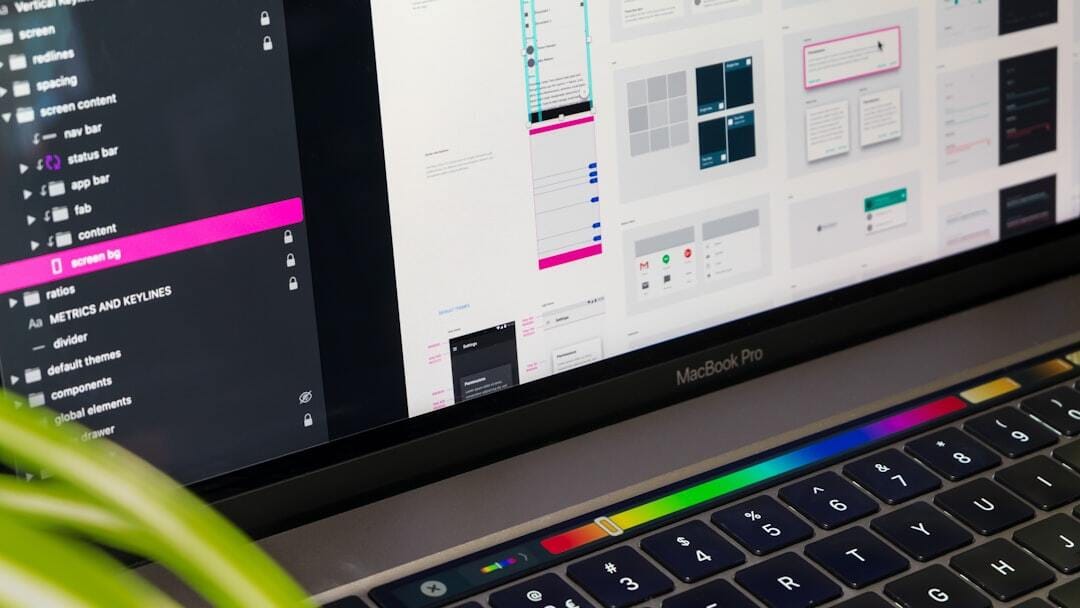- Nomad for Less
- Posts
- How to Land a High-Paying Remote Job (and Fund Your Nomadic Lifestyle!)
How to Land a High-Paying Remote Job (and Fund Your Nomadic Lifestyle!)
A comprehensive guide on securing a top-tier remote gig to fund your travels. 📖

Why This Guide Will Change Your Life
A few years ago, I was stuck in the typical 9-to-5 grind, spending my days dreaming of a life that didn’t require me to be in the same place every day while commuting into Chinatown, NYC from my home in Long Island. 🗽
I knew that remote work was becoming a thing, but I didn't realize just how possible it was to land high-paying gigs that would allow me to live that dream until Covid struck in 2020 and many people were forced to start working remotely.
Fast forward to today, and I’m able to work from cities I never thought I’d visit, spend winters in Florida, and travel wherever my heart desires.

Me, enjoying Florida in January
If you’ve found yourself wondering how you can fund your digital nomad life with a high-paying remote job, this guide is your new best friend.
In this guide, I’ll break down the exact steps you can take to get started on your own high-paying remote job search.
Ready to start working from anywhere? Let’s get into it. 👇️
Advertiser Disclosure: Our site and emails are part of an affiliate sales network and receive compensation for sending traffic to partners. This compensation may impact how and where links appear on our site and in our emails. Our site and emails do not include all financial companies or all available financial offers. Editorial Note: Opinions expressed here are the author's alone, not those of any bank, credit card issuer, hotel, airline, or other entity. This content has not been reviewed, approved, or endorsed by any of the entities included within the post.
1. Identify High-Paying, Nomad-Friendly Jobs 🔍️
Before jumping into applications, the first step is knowing which roles not only fit the nomadic lifestyle but also pay enough to support it comfortably.
In this section, we’ll expand on some of the highest-paying remote jobs that are perfect for digital nomads, diving deeper into why these roles are lucrative, the skills they require, and how to break into these fields.
High-Paying Remote Jobs for Digital Nomads:

1. Software Developer: This is one of the most in-demand and highest-paying remote jobs available today. Depending on the specific role and your experience, software developers can earn anywhere from $90,000 to $150,000+ per year. The remote nature of coding makes it ideal for nomads, as all you need is a laptop and a strong internet connection.
Skills Needed: Languages like Python, JavaScript, and Ruby on Rails are especially valuable in today’s market.
How to Break In: If you’re just starting out, platforms like Codecademy, Coursera, or Udemy offer courses to help you learn these languages. For more advanced learners, LeetCode and HackerRank provide challenges to hone your skills and prepare for coding interviews.
Your Journey: You start by working a few freelance gigs on Upwork. After a year of working on various remote projects, you find a client that hires you for a full-time role that pays $120,000 per year. Now, you travel around South America while working remotely for a Silicon Valley startup. Not bad if you ask me, and someone I’ve recently worked with took this exact path (via a personal reference instead of Upwork, but close enough).

2. Product Manager: Product and project management roles are critical to the success of tech companies, startups, and corporations. As a product manager, you’ll be responsible for managing user interviews, timelines for development work, having input into product design, and executing on deliverables to test new product features. The salaries for these roles range from $100,000 to $130,000 depending on experience. What makes this role ideal for digital nomads is that much of the work involves coordinating remote teams across different time zones.
Skills Needed: Strong organizational skills, proficiency in Agile methodologies, and experience with tools like Jira, Trello, and Monday.com are essential. Certifications like Certified ScrumMaster (CSM) or other various product manager certifications can give you an edge in the job market.
Your Journey: Imagine spending six months as a PM for a US-based startup while working from a beach in Thailand. You use tools like Jira and Smartsheet to keep your team on track while working with designers and software engineers to bring life to new feature ideas.

3. SEO Specialist: Search Engine Optimization (SEO) specialists are in high demand as businesses look to boost their online presence. An SEO specialist can earn anywhere between $70,000 and $120,000, depending on their level of experience. SEO jobs are highly flexible and allow you to work from anywhere, making it an ideal choice for digital nomads.
Skills Needed: Mastering tools like Google Analytics, Ahrefs, SEMrush, and Moz is key to success in SEO. Beyond the tools, you’ll need to understand content strategy, keyword research, and backlinking. SEO also requires a deep understanding of search engine algorithms, which change frequently, so you’ll need to stay updated with the latest trends and tools (including AI developments in the industry).
Your Journey: For this role you also start your SEO career on Upwork or Fiverr by taking on small clients. You use that income to travel through Europe, and within two years, you’re working with Fortune 500 companies and earning $100,000 annually to help business grow their organic traffic.

4. UX/UI Designer: UX/UI designers create user-friendly and aesthetically pleasing designs for websites and mobile apps. These roles can be incredibly lucrative, with salaries ranging from $90,000 to $140,000. Since most of the work involves design software and collaboration through tools like Figma and Sketch, UX/UI designers can work from anywhere.
Skills Needed: Proficiency in Figma, Sketch, Adobe XD, and InVision is essential. Knowledge of user research methods and experience in prototyping are also key for standing out in this field. Showcasing a strong design portfolio on platforms like Behance or Dribbble is crucial for landing high-paying gigs.
How to Break In: If you’re new to UX/UI design, platforms like Coursera and Udemy offer comprehensive bootcamps that cover both the technical and creative aspects of the job. Alternatively, attending design workshops through General Assembly can help you build your portfolio.
Your Journey: You start posting some of your work online to social media profiles, and you’ve created your own website featuring your design work. After working as a contractor for a few small companies, you land a full-time role designing the features for the flagship apps of a health and wellness company while living in the Mediterranean coastal city of Málaga, Spain.
Hopefully this paints a picture of a few opportunities you can pursue in the tech sector. If you’re looking for more in-demand remote jobs that are worth exploring, I’d check out the following articles:
☝️ Know someone that’s looking for remote jobs? Share this guide with them!
🧠 Learn Something New
Do you enjoy learning new things? Always have a thirst for knowledge like I do?
I’ve created a pretty big list of the top newsletters from all different categories. Think business ideas, future of work, financial publications, AI, & more. Check out over a dozen of the best ones here! 📬
2. Build Remote Work Experience (Even if You’re Starting from Scratch) ✍️
Remote work experience is critical if you’re applying for high-paying roles. Companies hiring remote workers want proof that you can manage your time well, communicate effectively, and deliver results without supervision. So, how do you build that experience, especially if you’re starting from scratch?

Freelancing as a Stepping Stone
Freelancing is one of the fastest ways to gain remote work experience. Platforms like Upwork, Fiverr, and Toptal allow you to find small gigs that can build your portfolio. By working as a freelancer, you can prove your ability to manage projects remotely, communicate with clients across time zones, and deliver results independently.
Upwork: With its vast marketplace, Upwork offers opportunities across a range of industries. Start by bidding on small projects and work your way up to larger, better-paying jobs. Keep in mind that Upwork takes a percentage of your earnings, but it’s a good starting point for gaining remote experience.
Fiverr: Fiverr is known for its gig-based format, where freelancers create packages (e.g., "I will write a blog post for $50"). This is ideal for digital nomads who want to quickly build a portfolio.
Toptal: If you’re highly skilled, Toptal offers access to premium clients who are looking for top talent. The platform is known for its rigorous vetting process, but if you make it through, you’ll have access to high-paying freelance gigs.

Building a Portfolio That Shines
Your portfolio is your most important tool when applying for remote jobs. Whether you’re a designer, writer, marketer, or developer, your portfolio needs to showcase your best work and emphasize remote projects you’ve managed.
Create a Digital Portfolio: Platforms like Wix, Squarespace, and WordPress make it easy to create a professional portfolio site. Ensure your portfolio highlights projects where you worked remotely, as employers want to see evidence of your ability to manage tasks independently.
Include Testimonials: If you’ve worked with clients or employers remotely, ask them for testimonials. Nothing builds trust like a glowing review from a satisfied client.
Feature Remote-Specific Work: Make sure you include remote-specific skills and projects in your portfolio. If you’ve used collaboration tools like Trello, Slack, or Zoom to manage projects, highlight those experiences.
For example: Take John, a UX/UI designer. He started by volunteering his services to redesign websites for small businesses. After completing five projects, he had enough material to build an online portfolio. With his portfolio, he landed his first remote UX job within three months.
Redeem 3 Months of Premium for $0 💌
Hey nomads! For a limited time, my most active readers can get 3 months of Premium for $0. You read that right. You’ll get:
💼 Exclusive Job Board Access: Discover top remote gigs worldwide.
😎 Join the Slack Chat Community: Connect with fellow nomads via Slack.
🤑 Premium Discounts: Access exclusive deals for our digital nomads.
🎒 Support the Nomad Community: Help me keep creating content! 😄
You’ll get 90 days of premium content and perks, for nothing. And you’ll be helping me out in the process if you remain a subscriber after the free period, which would be nice of you! Redeem your free months here and grab your deal now!
3. The Best Places to Find High-Paying Remote Jobs 🌐
In this section, we’re diving into specific job boards and platforms where you can find lucrative remote opportunities. It’s not just about knowing the websites, but also how to leverage them effectively to maximize your chances of landing the right job.
Top Remote Job Boards: How to Leverage Them

1. We Work Remotely lists opportunities in fields like software development, design, marketing, sales, and customer support. This is a great platform for both technical and non-technical roles, and it attracts employers who are serious about hiring remote workers.
How to Use It:
Set Alerts: One of the best features on We Work Remotely is the ability to set alerts based on keywords and job categories. For example, if you're a developer, you can create an alert for "React Developer" and get notified when new jobs are posted.
Tailor Your Applications: Since this board is highly competitive, make sure you stand out by tailoring your resume and cover letter to match the job description. Mention specific tools they require, like Trello, Slack, or Asana, and emphasize your remote experience.

2. FlexJobs stands out as a premium job board that curates only legitimate, flexible, and remote job opportunities. They screen each job listing, so you won’t have to worry about scams. There’s over 50 categories, and though it requires a subscription, many nomads swear by the quality of leads on this site.
How to Use It:
Tailor Your Search: FlexJobs allows you to filter by job categories, remote work level (e.g., "100% remote" or "Partially Remote"), and even by companies that have a history of hiring remote workers.
Use the Learning Center: FlexJobs offers a comprehensive learning center with webinars and career coaching services to help you sharpen your remote work skills.

3. Wellfound is a great platform for finding remote jobs at startups. These roles often come with added perks like stock options and flexible work hours. Wellfound is known for being a top choice for tech professionals, especially in development, design, and marketing roles.
How to Use It:
Optimize Your Profile: Wellfound lets you create a detailed profile that functions like a hybrid resume and pitch deck. Use this feature to highlight your remote work experience, specific technical skills, and projects you’ve worked on.
Pitch Directly to Founders: One of the unique features of Wellfound is that you can pitch directly to founders and hiring managers. Use this opportunity to make a personal connection and show how you can help the company grow remotely.

4. LinkedIn remains a powerhouse for finding remote jobs, especially if you’re looking to network directly with recruiters and hiring managers. LinkedIn allows you to set filters for remote roles and connect with industry professionals, which can often lead to job opportunities before they’re publicly listed.
How to Use It:
Create a Remote-Specific Profile: Make sure your profile is optimized for remote work by listing tools like Zoom, Slack, and Asana under your skills section. Add keywords like "remote" and "distributed team" to attract recruiters looking for remote employees.
Leverage LinkedIn Premium: While LinkedIn Premium comes with a monthly fee, it provides insights into who’s viewed your profile and offers better visibility for your job applications.
🤝 How I Can Help You
💼 Find Remote Work on Our Job Board - Apply to the latest jobs for a better chance at having your application seen.
🧠 Discover Popular Newsletters - Additional newsletters added daily so you can expand your knowledge.
💳️ Save Big with the Best Travel Cards - See which cards have the latest points/miles bonuses.
🌟 Join the Slack Community - Chat with our members about travel ideas, deals, accommodations and more.
📰 Browse Our Past Newsletters - Access our insights on dozens of destinations and get the latest news.
💭 Share Your Ideas with Me - Drop me a line and let me know what to write about.
📈 Advertise with Us - Grow your business with ads in this newsletter.
4. Crafting the Perfect Remote Resume and Cover Letter
A remote job application is very different from a traditional one. Employers want to see that you not only have the skills but also the discipline, communication ability, and adaptability to thrive in a remote environment.
Remote Resume Best Practices:

1. Highlight Your Remote Experience: Whether you’ve freelanced, worked on a distributed team, or managed remote projects, make sure your resume emphasizes your remote work experience. If you haven’t worked remotely yet, emphasize skills that are critical for remote work: self-motivation, time management, communication, and problem-solving.
How to Do It:
Section for Remote Work: Create a dedicated section in your resume for “Remote Work Experience” or “Freelance Projects” to show that you’re comfortable working independently.
Mention Tools: If you’ve used tools like Slack, Zoom, Trello, or Asana to manage projects, mention them. Employers want to know you can thrive in a digital workspace.
2. Quantify Your Achievements: Don’t just list your job responsibilities—quantify your results. For example, instead of saying “Managed social media accounts,” say “Increased social media engagement by 30% through targeted content strategies.” This shows employers that you’re results-driven, even when working remotely.
3. Tailor Your Resume for Each Job: Applying for remote jobs requires a personalized approach. Take the time to tailor your resume for each application, focusing on the specific skills and tools mentioned in the job description. This increases your chances of making it through applicant tracking systems (ATS) that many remote employers use.
Writing a Stand-Out Cover Letter for Remote Jobs:

Your cover letter is your chance to show off your personality and highlight why you’re a perfect fit for remote work. Here’s how to craft a compelling one:
1. Start with a Hook: Open with a compelling statement that grabs the hiring manager’s attention. Instead of saying “I’m applying for the project manager role,” try something more engaging like, “I’ve managed distributed teams across three continents and delivered projects on time and under budget.”
2. Explain Your Remote Work Skills: Use your cover letter to explain how your experience aligns with remote work. If you’ve worked remotely before, talk about your communication strategies, time management, and collaboration techniques. If you haven’t worked remotely yet, explain why you’re well-suited for it based on your work habits and skills.
3. Personalize It: Hiring managers can spot a generic cover letter from a mile away. Take the time to research the company and mention why you’re excited to work with them specifically. You can mention a recent project they’ve worked on, a product launch, or even a company value that resonates with you.
Example from my life: When applying for a remote marketing role, I opened my cover letter by mentioning how I had used the company’s services as a customer and explained how my experience allowed me to better understand their target users’ needs. The hiring manager appreciated the personalized approach and invited me to an interview.
5. Acing the Remote Interview
By this point, you’ve found high-paying remote jobs, crafted a standout resume, and caught the eye of a hiring manager. Now it’s time for the interview. Interviews for remote positions can be different from traditional ones because they’re often conducted over Zoom, Skype, or Google Meet, and they focus heavily on how you’ll function as part of a remote team. Let’s dive into how to prepare and impress during a remote job interview.
Before the Interview: Prepare Like a Pro

Research the Company
Just like any other job interview, researching the company is critical. But for remote roles, focus specifically on understanding their remote work culture. Some companies have fully distributed teams, while others may be hybrid or primarily based in certain time zones. Understanding their remote-first culture will help you answer questions and show that you’re aligned with their work environment.
How to Do It: Search for the company on Glassdoor or check out their LinkedIn profile. Look for reviews that mention remote work policies, tools they use, and employee satisfaction.
For example: You’re applying for a remote project management role at a company with a global team. Before the interview, read through the Glassdoor reviews and see if they use Slack for communication or Trello for project management. You can use that information to talk about your experience with those tools, which could impress the interviewer.
Test Your Tech
This might seem obvious, but technical difficulties during a remote interview can ruin an otherwise perfect conversation. Make sure your internet connection is strong, your webcam works, and your microphone is clear. Test your setup by doing a video call with a friend beforehand to ensure everything is working smoothly.
Pro Tip: Use Zoom, Google Meet, or Microsoft Teams, depending on what the company uses for their interviews. Familiarize yourself with the platform so you won’t have to fumble during the call.
Background Matters: Find a quiet, professional-looking space to take the call. Avoid cluttered or distracting backgrounds and use good lighting. You can even use a virtual background if necessary—just make sure it’s simple and professional.
During the Interview: Show Off Your Remote Skills

Highlight Your Remote Work Experience
Even if the job you’re interviewing for is remote, the company wants to know how well you function in a distributed environment. During the interview, emphasize your ability to self-manage, stay organized, and communicate effectively without needing supervision.
How to Do It: Share examples of how you’ve managed projects remotely, coordinated across time zones, or maintained productivity while working from different locations.
For example: You can discuss how you’ve led a remote team using Asana for project tracking and Slack for daily check-ins. This shows the interviewer that you’re comfortable managing a distributed team and staying on top of tasks.
Emphasize Communication and Collaboration Skills
Remote work relies heavily on communication, so interviewers often ask how you stay in touch with teams and managers. Be prepared to explain how you keep communication channels open, manage expectations, and ensure nothing falls through the cracks when working remotely.
What to Say: “I use tools like Slack and Zoom to stay connected with my team throughout the day. I make sure to communicate regularly, whether that’s through daily stand-up meetings or one-on-one check-ins, to ensure everyone’s on the same page.”
Demonstrate Time Management Skills
One of the biggest concerns employers have about remote workers is their ability to manage time effectively. Talk about how you organize your day, prioritize tasks, and stay productive without direct oversight.
Pro Tip: Mention any time management techniques you use, such as the Pomodoro Technique or tools like Todoist and Trello to organize your tasks.
Example: “I use the Pomodoro Technique to break my workday into focused intervals and stay productive. I also rely on Trello to organize my daily tasks and prioritize deadlines.”
Answering Common Remote Job Interview Questions
Here are some specific questions you’re likely to face during a remote job interview, and how to answer them effectively:
“How do you stay organized while working remotely?”
Hiring managers want to hear that you can juggle multiple tasks and keep yourself on track without someone watching over your shoulder. Mention tools and strategies that help you stay organized, like Trello for project management, Google Calendar for scheduling, and Slack for team communication.
“How do you manage time zone differences?”
Many remote teams span different time zones, so employers want to know how you’ll handle working asynchronously. Share how you coordinate across time zones and keep projects moving even when team members aren’t online at the same time.
Example: “I always adjust my calendar to match my team’s time zones. For example, when I was working with a client in London, I scheduled our meetings in the early morning to accommodate their work hours. I also made sure to document everything in Trello so everyone could stay updated, regardless of when they logged in.”
“How do you handle distractions at home?”
This question tests your ability to focus and maintain productivity outside a traditional office. Share how you create a distraction-free environment, whether that’s by working in a quiet room, using noise-canceling headphones, or setting specific work hours.
What to Say: “I’ve set up a dedicated workspace at home where I can focus on work. I also set boundaries with my family or housemates to minimize distractions during work hours.”
Following Up: Seal the Deal

After the interview, make sure to send a personalized follow-up email within 24 hours. Thank the interviewer for their time, reiterate your interest in the role, and mention something specific from the interview to reinforce your enthusiasm.
Example: “Thank you for taking the time to chat with me today. I’m really excited about the opportunity to work with your team and help grow your content strategy. I particularly enjoyed learning about your approach to remote collaboration using Trello and Slack—I’ve had great success with those tools in past roles.”
6. Negotiating Pay and Flexibility Like a Pro
Congrats, you’ve passed the interview! Now comes the part that makes many people nervous—negotiating your salary and benefits. The good news is that remote jobs offer flexibility not just in where you work but also in how you structure your compensation package. Let’s talk about how to get the best deal.
Do Your Research Before Negotiating

Before you can negotiate confidently, you need to know what you’re worth. Use salary research tools like Glassdoor, Payscale, and Salary.com to get an idea of what others in similar roles are earning. Don’t forget to factor in the location—you might be working from Bali, but the salary should be competitive with employees in high-paying regions like the U.S. or Europe.
How to Use It: Input the job title and select "remote" as the location to get an accurate salary range for remote workers. Also, look at LinkedIn Salary Insights, which provides salary estimates for specific companies and roles.
Negotiating Salary for Remote Work

1. Be Clear About Your Value: When negotiating your salary, focus on the value you bring to the company. Highlight your skills, experience, and achievements—especially any that demonstrate your ability to deliver results remotely. For example, if you’ve managed large projects or increased sales while working remotely, mention that during the negotiation.
What to Say: “Based on my research, the market rate for a project manager in a remote role is between $90,000 and $120,000. Given my experience managing cross-functional remote teams and successfully completing projects under budget, I’m confident that $110,000 is a fair starting salary.”
2. Negotiate More Than Just Salary: One of the advantages of remote work is the flexibility it offers. Even if the salary offer is lower than expected, you can negotiate for additional benefits such as flexible working hours, more vacation days, or even a home office stipend.
For example: Instead of turning down a role that pays a little below what you’re asking for, negotiate for additional vacation days and a flexible work schedule that allows you to take time off to travel without dipping into your vacation days.
3. Consider Time Zones and Hours: Some companies may require you to be online during certain hours, especially if you’re working across time zones. Be upfront about your preferences—if you want more flexibility in your schedule, this is the time to ask for it.
What to Say: “I’m happy to work around core hours that overlap with the team, but I’d like to discuss having more flexibility to set my own schedule outside of that window.”
Take Action and Start Your Remote Work Journey
You’ve made it through the ultimate guide to landing a high-paying remote job, and now it’s time to take action. Whether you’re starting from scratch or have been searching for remote opportunities for a while, the strategies in this guide give you the tools to find, apply for, and secure your ideal job while living the digital nomad lifestyle.
Here’s a quick recap of the steps we’ve covered:
Identify High-Paying Remote Jobs
Start by targeting roles that align with your skills and offer lucrative salaries. Whether you’re a software developer, project manager, or content creator, there are remote jobs out there that pay well and fit the digital nomad lifestyle.Build Remote Work Experience
Freelancing platforms like Upwork, Fiverr, and Toptal allow you to gain the necessary experience to prove that you can handle working remotely. Create a stellar portfolio that highlights your remote work experience and showcases your skills.Leverage Remote Job Boards
Use job boards like We Work Remotely, FlexJobs, Wellfound, and LinkedIn to find high-paying remote opportunities. Set up alerts, build your network, and apply to jobs that align with your career goals.Perfect Your Resume and Cover Letter
Tailor your resume for remote positions by highlighting your ability to work independently, communicate effectively, and manage projects remotely. Write personalized cover letters that showcase why you’re the ideal candidate for the role.Ace the Remote Interview
Demonstrate your remote work skills during the interview by showcasing your communication, time management, and organizational abilities. Use the interview to explain how you manage distractions, work across time zones, and stay productive without supervision.Negotiate Pay and Flexibility
When you receive an offer, don’t just focus on the salary. Negotiate for additional benefits like flexible work hours, extra vacation days, or stipends for remote work equipment. Be clear about your value and confident in your ask.
Your Next Steps
You now have all the tools, strategies, and insights you need to land that high-paying remote job and live the digital nomad lifestyle you’ve been dreaming of. But remember, this is just the beginning! Here’s what you can do right now to get started:
Set Up Job Alerts: Go to We Work Remotely, FlexJobs, or Wellfound and set up custom alerts for the types of jobs you’re interested in. This way, you’ll be the first to know when a new position is posted.
Optimize Your LinkedIn Profile: Update your LinkedIn profile to reflect your desire for remote work. Add relevant keywords like "remote project manager" or "distributed team expert" to attract recruiters.
Build Your Portfolio: If you don’t already have an online portfolio, start building one today on platforms like Wix or WordPress. Include remote projects, testimonials, and case studies that demonstrate your skills and ability to work independently.
Network with Other Digital Nomads: Join Slack or LinkedIn groups dedicated to digital nomads and remote work. These communities often share job leads, tips, and resources that can help you in your search.
Keep Learning: The remote job market is competitive, so stay ahead of the curve by continuously upskilling. Platforms like Udemy and Coursera offer affordable courses on everything from coding to digital marketing. Stay current with the tools and trends that will keep you marketable as a remote worker.
Stay Connected!
If you want to receive more tips, insider knowledge, and job listings for high-paying remote opportunities, don’t forget to subscribe to Nomad for Less! Every week, we deliver the latest remote job openings, travel hacks, accommodation deals, and digital nomad stories right to your inbox. Stay in the loop and start living the life you’ve always wanted—working from anywhere in the world.
Sign up now and start your remote work journey today!
Send me your feedback at [email protected]. Your ideas directly influence what I work on.
Thanks for your support, and happy exploring! ✈️
- Kevin from Nomad for Less

Me, Looking to Get You a Remote Job
Reply